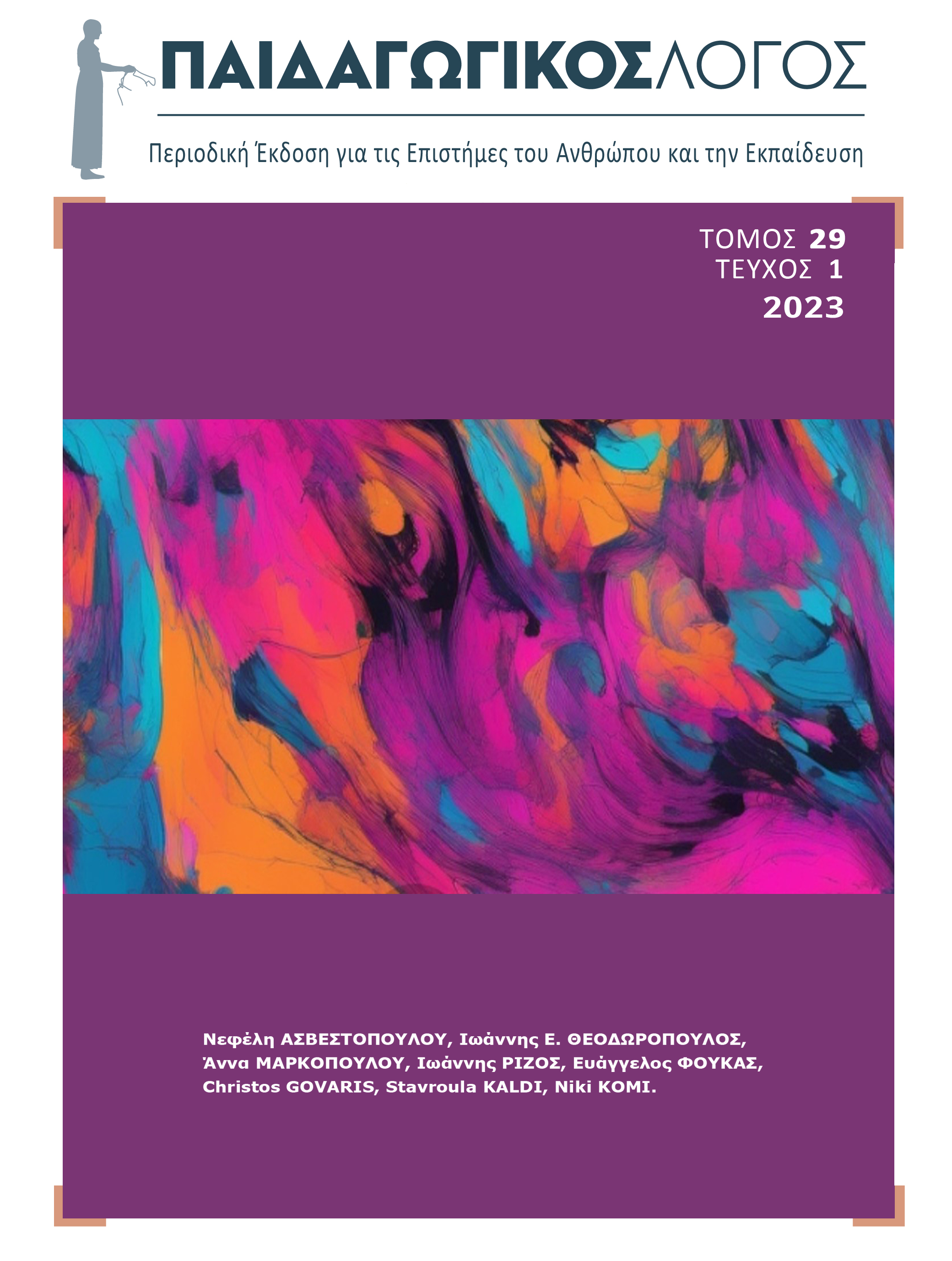Μπορεί το μοντέλο της αντίστροφης τάξης να εφαρμοστεί στο μάθημα των Μαθηματικών; Απόψεις και εμπειρίες εκπαιδευτικών
Resumen
Η εργασία εστιάζει στη διερεύνηση των απόψεων και την καταγραφή των εμπειριών 38 Ελλήνων εκπαιδευτικών που υπηρετούν σε όλες τις βαθμίδες της Δημόσιας Εκπαίδευσης, σχετικά με την αξιοποίηση του διδακτικού μοντέλου της αντίστροφης τάξης στο μάθημα των Μαθηματικών. Τα δεδομένα συλλέχθηκαν με διαδικτυακά ερωτηματολόγια και ημιδομημένες συνεντεύξεις, και αναλύθηκαν στο πλαίσιο της υπάρχουσας βιβλιογραφίας και των πρόσφατων σχετικών εμπειριών των συγγραφέων. Η έρευνα αποκαλύπτει σύγχυση των συμμετεχόντων γύρω από το τι είναι και πώς μπορεί να αντιστραφεί η τάξη, φωτίζει μέσα από το πρίσμα των δασκάλων και των καθηγητών τα πλεονεκτήματα και τους ανασταλτικούς παράγοντες αξιοποίησης της μεθόδου, υποδεικνύει την ανάγκη για στήριξη των εκπαιδευτικών και, τελικά, μπορεί να φανεί χρήσιμη στους υπεύθυνους χάραξης της εκπαιδευτικής πολιτικής.
Article Details
- Cómo citar
-
Ρίζος Ι., Νίνου Γ., & Ασβεστοπούλου Ν. (2024). Μπορεί το μοντέλο της αντίστροφης τάξης να εφαρμοστεί στο μάθημα των Μαθηματικών; Απόψεις και εμπειρίες εκπαιδευτικών. Παιδαγωγικός Λόγος, 29(1), 33–56. https://doi.org/10.12681/plogos.35834
- Sección
- Articles

Esta obra está bajo una licencia internacional Creative Commons Atribución-NoComercial-SinDerivadas 4.0.
Οι Συγγραφείς που δημοσιεύουν εργασίες τους σε αυτό το περιοδικό συμφωνούν στους παρακάτω όρους:
- Οι Συγγραφείς διατηρούν τα Πνευματικά Δικαιώματα και χορηγούν στο περιοδικό το δικαίωμα της πρώτης δημοσίευσης, ενώ ταυτόχρονα τα πνευματικά δικαιώματα της εργασίας προστατεύονται σύμφωνα με την χρήση άδειας που υιοθετεί ο «Παιδαγωγικός Λόγος - Περιοδική Έκδοση για τις Επιστήμες του Ανθρώπου και την Εκπαίδευση» : Αναφορά Δημιουργού – Μη Εμπορική Χρήση – Όχι Παράγωγα Έργα 4.0 (CC BY-NC-ND). Αυτή η άδεια επιτρέπει στους άλλους να έχουν πρόσβαση στο έργο και να το μοιράζονται με άλλους, εφόσον κάνουν αναφορά σε αυτό, ωστόσο δεν μπορούν να το αλλάξουν με κανένα τρόπο ούτε να το χρησιμοποιούν για εμπορική χρήση.
- Οι συγγραφείς μπορούν να συνάπτουν ξεχωριστές και πρόσθετες συμβάσεις και συμφωνίες για τη μη αποκλειστική διανομή της εργασίας, όπως δημοσιεύτηκε στο περιοδικό αυτό (π.χ. κατάθεση σε ένα ακαδημαϊκό καταθετήριο ή δημοσίευση σε ένα βιβλίο), με την προϋπόθεση της αναγνώρισης και την αναφοράς της πρώτης δημοσίευσης σε αυτό το περιοδικό.
- Το περιοδικό επιτρέπει και ενθαρρύνει τους συγγραφείς να καταθέτουν τις εργασίες τους μέσω διαδικτύου (π.χ. σε ένα ακαδημαϊκό καταθετήριο ή στους προσωπικές τους ιστοσελίδες) πριν και μετά από τις διαδικασίες της δημοσίευσης, καθώς αυτό μπορεί να οδηγήσει σε παραγωγική ανταλλαγή ιδεών και σκέψεων, καθώς επίσης και σε γρηγορότερη και μεγαλύτερη χρήση και ευρετηρίαση της δημοσιευμένης εργασίας



